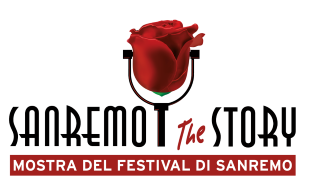Presentazione
Vincenzo Mollica

Raccontare il Festival di Sanremo come se fosse un’opera pop o meglio di quella pop art che spesso ci ha fatto capire più di tante altre espressioni il senso o il non senso della nostra contemporaneità. Non ci aveva pensato mai nessuno di mettere in piedi una mostra per raccontare il Festival della canzone italiana, attraverso momenti e curiosità, oggetti e feticci, che restituissero il valore artistico e popolare, senza dimenticare l’evoluzione del costume, che si specchia in questa manifestazione, non a caso citata come esempio per- fetto di pop art. Così Pepi Morgia ha pensato la sua mostra sul Festival, come se stesse esponendo dei quadri concettuali sui sessant’anni di storia passati, in totale libertà, senza cadere nel tranello dei facili didascalismi o peggio ancora in quello degli archivi polverosi che vengono aperti. Tutto quello che è stato vive senza tempo nella mostra di Morgia, tutte le canzoni risuonano come se fossero state scritte oggi, tutti i cantanti cantano come in un inesauribile presente. I migliori trucchi che ci regala la memoria sono proprio quelli in cui ci fa perdere la cognizione del tempo, in cui ci stordisce di emozioni, cancellando le parole passato, presente e futuro.
Pepi Morgia non si pone come uno storico o come una critico musicale, ma come un arti- sta che compone dei quadri musicali che vanno a realizzare il grande affresco di un avve- nimento che ha appassionato un’intera nazione. Del resto questo è quello che ha fatto Morgia in tutti i suoi anni di lavoro: cercare di dare un senso alla rappresentazione musi- cale attraverso l’uso creativo delle luci e delle scene nelle sue regie teatrali, perché anche nella musica leggera si può parlare di teatralità. E così il Festival di Sanremo si presenta come un grande quadro pop, un graffito dipinto lungo una strada che dura da sessant’anni, pieno di dettagli da scoprire, pieno di particolari che suggeriscono nuove prospettive. Pepi Morgia ha concepito questa mostra come una festa mobile, perché alla fine dei conti que- sto è stato il Festival di Sanremo: la prima festa mobile che è entrata nelle nostre case attraverso la radio e la televisione, regalandoci canzoni come frammenti di vita sempre presenti.
Sanremo Music Festival as a pop work or, even better, as a work of pop art, which has often unveiled meanings and nonsense of the contemporary world. Nobody had ever thought to set up an exhibition to tell the story of the Festival of Italian music.
Anecdotes, oddities and memories represent the artistic and social value of the festival and make sense of the interactions between the evolutions of customs and this event, con- sidered with a reason a perfect example of Pop Art.
Pepi Morgia has so conceived his exhibit about the Festival, just like if he was showing con- ceptual paintings on the last 60 years of history, completely free, without being misled by didacticism or-even worse- without giving an impression of dusty files finally open.
All that has been, it lives timeless in Morgia’s exhibit, all the songs resonate as if they had been written today, every singer sings as in an eternal time being.
The best tricks of the memory are those that let us lose the sense of time, overwhelming us with emotions and deleting the words past, present, future.
Pepi Morgia is not here as historian or music critic, but as an artist who composes musi- cal paintings that together are a fresco of a happening, which has thrilled an entire coun- try.
Which is what Morgia did over years of his work: making sense of musical representation through a creative use of light and scenes as theatre play’s director, for there is something theatrical also in pop music. Sanremo Music Festival thus appears as a pop work, graffiti painted on the side of a road, which has been running for 60 years, full of details to be unveiled and suggesting new perspectives.
Pepi Morgia has conceived this exhibit as a moving fest, as this is what Sanremo Music Festival has always been, at the end of the day: the first moving fest which entered in our houses through radio and TV, bringing to us songs as evergreen fragments of life.
